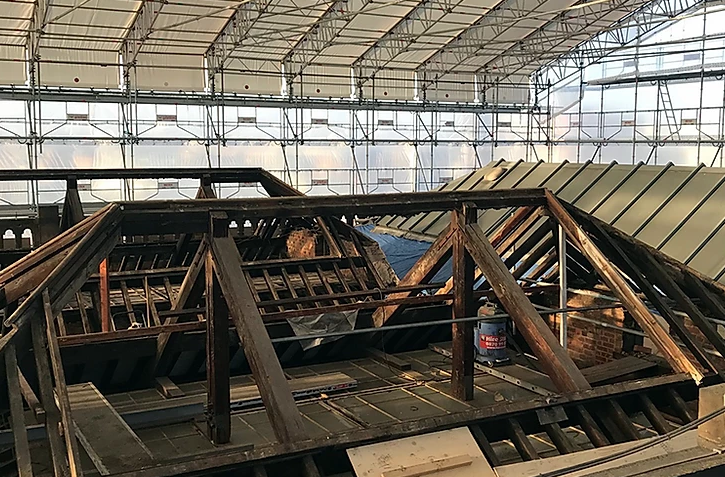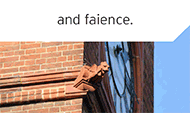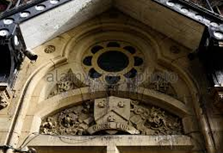Heritage Roofing
Heritage roofing - maintaining our iconic buildings
The UK is home to some of the most iconic buildings in the world, from stunning churches and cathedrals to historic stately homes. Each and every one of these remarkable feats of architecture requires regular maintenance to ensure they remain in the very best condition, allowing them to be enjoyed for generations.
Cathedral Care
Restoration and upkeep of cathedrals
There are some 42 Anglican cathedrals in the UK, not to mention 20 or so Catholic cathedrals. Cathedrals form the most important collection of historic buildings in England. The largest and most ancient are internationally famous, the smallest are usually among the most significant buildings in their region and even the most recent are architectural masterpieces.
Master Craftsmen
Championing our heritage with modern craftsmanship
Twenty years ago, English Heritage (now Historic England) published its first-ever Register of Buildings at Risk across England, which featured nearly 2,000 buildings and monuments that were ‘neglected, broken and unloved’. Recently Historic England was delighted to announce that over two-thirds of those buildings were now safe, in both urban and rural areas right across the country.
Traditional Lime
Lime: it’s better for buildings – and for the environment
It is now fairly well known that cement is not good for old buildings and that lime mortar should be used. But why? What are the advantages and what are the disadvantages? In order to begin to answer those questions it is necessary to understand the nature of traditional building, the process by which buildings used to be built, and how it differs from modern construction, the process by which we build today.
Audio Visual
Audio visual equipment in church buildings
This guidance is issued by the Church Buildings Council under section 55(1)(d) of the Dioceses, Mission and Pastoral Measure 2007. As it is statutory guidance, it must be considered with great care. The standards of good practice set out in the guidance should not be departed from unless the departure is justified by reasons that are spelled out clearly, logically and convincingly.
Read More...
CRE Events
Exhibitors enthuse over the CRE experience
By 4pm on the first day of CRE 24 at the Marshall Arena in Milton Keynes, exhibitors Chris and Kim Dunphy had already had so many helpful and detailed conversations with visitors that they were “completely talked out”.
Insurance
You need to ensure that reasonable precautions are in place at your church to keep it safe for those who use it. To do this, you need to think about what might cause harm to people.
You will then need to decide if the precautions already in place are adequate. If they are not, you may need to identify further action to prevent any danger. When done formally, this is known as a risk assessment.
Church Maintenance
Church maintenance and repair: Calendar of Care
Just as prevention is always better than cure, maintenance is preferable to major repairs. But, such repairs may not always be avoidable. Church Care offers a monthly guide in our coming issues Starting in Spring
We can help you understand the common problems and areas that need your special attention, and give you tips for regular maintenance schemes.
Pest Control
Michael Palin warns of pest threat to churches
Michael Palin is supporting the future of the UK’s historic churches and chapels with a voiceover for a new animated film. The 80 second animation, produced for the National Churches Trust, highlights why churches are some of the nation’s best loved buildings.
Town Halls
The history of the great Victorian Town Halls of Northern England
From industrial squalor to civic pride, the story behind some of the most impressive buildings of the North involve a unique mix of economics, grand designs and noble sentiments within communities.
Lead Roofing
Lead is one of the oldest materials in the roofing industry and is still commonly used throughout the world today.
Lead roofing is a traditional roofing method which has been used in the industry for hundreds of years, and is therefore proven to be extremely reliable. Lead roofing, and sand-cast lead, in particular is ideal for old buildings such as churches or historical renovations, whereas milled lead roofing is a mass-produced alternative, used for precision and accuracy in homes and commercial buildings alike.
Lightning Protection
When lightning strikes are you protected against this act of God?
The issue of lightning protection in churches is one that has exercised this publication for many years. In this four-part series of spotlights on the issue we will be revisiting various aspects of the subject, beginning with an overview of current thinking.
SEARCH OUR DIRECTORY
The history of London and Ipswich based organ builders Bishop and Sons
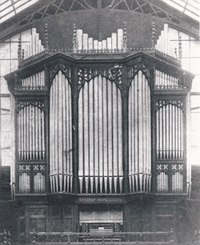 Founded in 1795, James Chapman Bishop’s first workshops were at York buildings in Saint Marylebone. He soon became well established and took on the premises of 250 Marylebone Road as his workshops.
Founded in 1795, James Chapman Bishop’s first workshops were at York buildings in Saint Marylebone. He soon became well established and took on the premises of 250 Marylebone Road as his workshops.
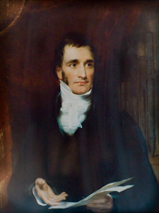
J. C. Bishop quickly built a good reputation and became widely known as a master organbuilder whose attention to detail and expert knowledge, combined with ingenuity and craftsmanship, produced some of the finest English organs of the nineteenth century.
The master organbuilder insisted from the start of his career that his house used only the finest materials and best quality resources in its manufactory and that this rule was not compromised for expedience or financial economy.
James Bishop was responsible for inventing some of the features that we take for granted in organbuilding today, namely the anti-concussion valve to provide steady wind, the Clarrabella stop and the composition pedals.
Charles Augustus Bishop and George Speechley Bishop were J. C. Bishop’s sons, both of whom were trained as organbuilders and followed in their father's footsteps and ran the firm alongside him. Charles was more involved in the running of the firm, taking on many of the responsibilities at the workshops while his father was travelling on firm’s business. After his father’s death in 1854, responsibility for the firm fell largely into Charles’ hands, and indeed he was responsible for the partnerships with Starr and Richardson. George decided to spend less time at the workshops and gave his time only when needed.
Charles Kenwrick Kenelm Bishop was Charles Augustus’ son, who was put to task in the firm at every opportunity from a young age, he was much loved by all of the men and became an excellently skilled young organbuilder. C. K. K. was a man of great vision who sadly became ill from a young age and so didn’t live to fulfil his dreams and potential. However in his time at the heart of the firm the young Charles was able to follow in his grandfather's footsteps showing innovation and attention to detail. The firm saw a new era of ingenuity and creativity during C. K. K.’s time with the registration of new patents and improvement of techniques and practices, a remarkable achievement in such a small span of time.
Edward Hadlow Suggate was an organbuilder at Bishop and Son during Charles K. K. Bishop’s time. As young Charles became too ill to administrate the firm, E. H. Suggate saw the need for a certain future for the firm and was able to raise the money necessary to purchase the business and its assets. Mr Suggate subsequently was able to take over the entire management of the firm but was keen to keep Charles involved as much as possible. Indeed Charles was constantly present in the workshop, both in the offices and at the bench. When C. K. K.Bishop died, Mr Suggate insisted upon ensuring financial support for his widow and family.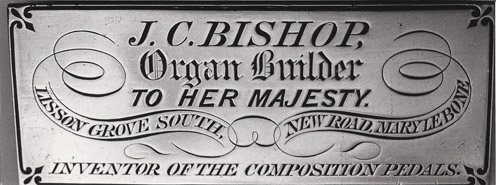 During Edward Hadlow Suggate’s time as Principal of the firm, Bishop and Son saw some of the most dramatic changes in organbuilding. Indeed he was to oversee its progress through the end of the nineteenth century and its journey through the beginning of the twentieth, this is by many considered to be one of the most important periods of the trade’s history. In his time Mr Suggate was responsible for the purchasing of a new large works as the firm expanded to Ipswich, and he completely re-tooled twice.
During Edward Hadlow Suggate’s time as Principal of the firm, Bishop and Son saw some of the most dramatic changes in organbuilding. Indeed he was to oversee its progress through the end of the nineteenth century and its journey through the beginning of the twentieth, this is by many considered to be one of the most important periods of the trade’s history. In his time Mr Suggate was responsible for the purchasing of a new large works as the firm expanded to Ipswich, and he completely re-tooled twice.
Mr Suggate was keen to maintain the firm's tradition of best quality what ever the cost and was equally as keen to advance as far as possible the techniques and output of the firm. After the loss during the Great War of his son Eric Suggate, a gifted young man and a brilliant engineer who was responsible for the firm’s electric and hydraulic blowing achievements up to the war, Mr Suggate worked closely with his work's manager Mr Holt to develop any area of the trade it was possible to, and in the 1920’s Bishop and Son was responsible for achievements in developing the electric action which is still remarkable today. Indeed the techniques developed by them were not used by some other firms until decades later and are still in use today, the late R. A. Williams (Stero) basing much of his electrical equipment on the firm’s designs.
Mr Suggate took a keen interest in the building and finishing of every organ the firm worked on and would attend to the finishing himself. This attentiveness produced some of the most musical instruments of the period and was passed on to Mr Suggate’s daughter.
Hilda Mary Suggate ran the firm after her father's death. She was a shrewd businesswoman like her father before her and shared his compassion for the staff as well as the work they carried out.
To find out more and contact the company visit www.bishopandsonpipeorgans.co.uk and www.bishopandsonipswich.co.uk














